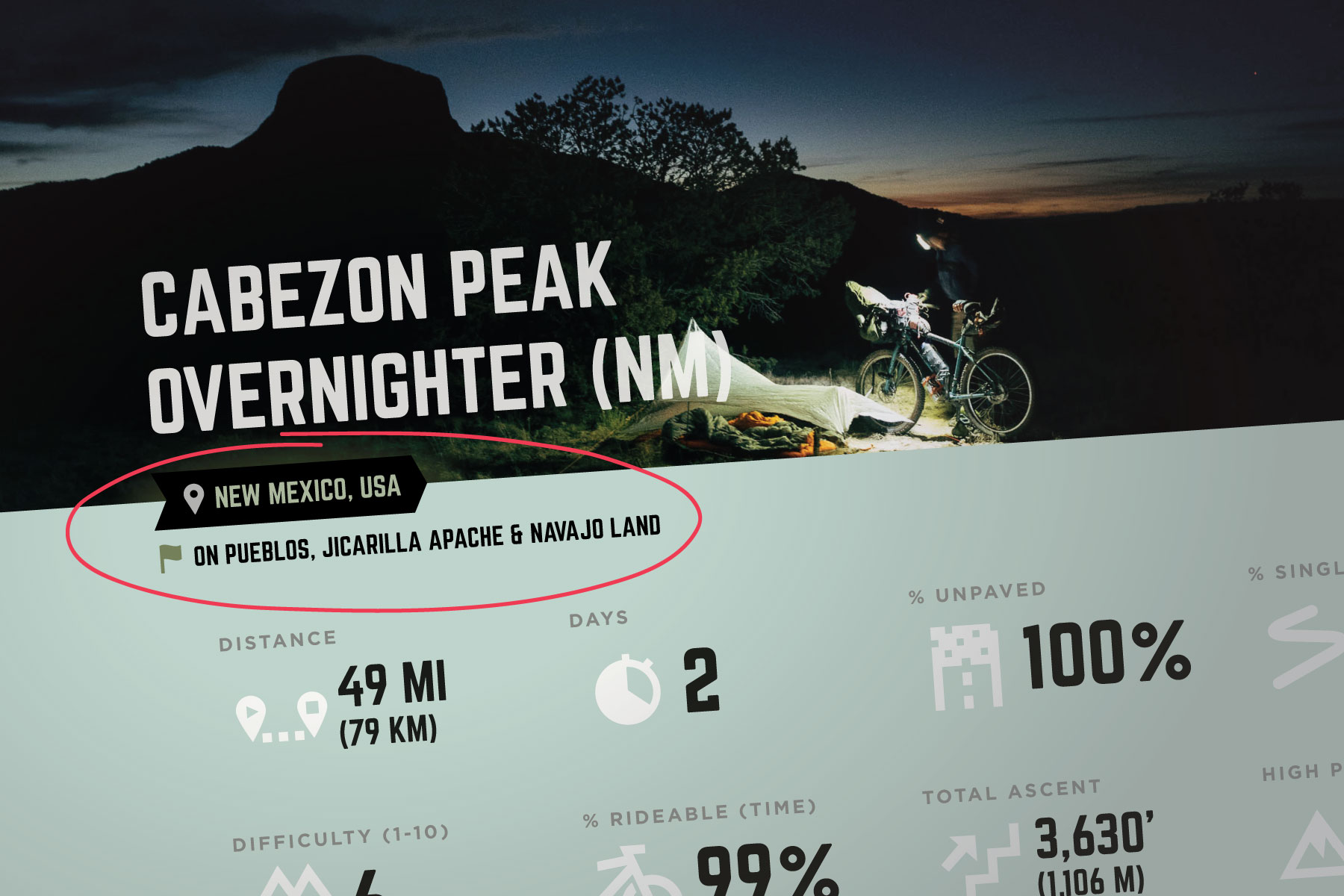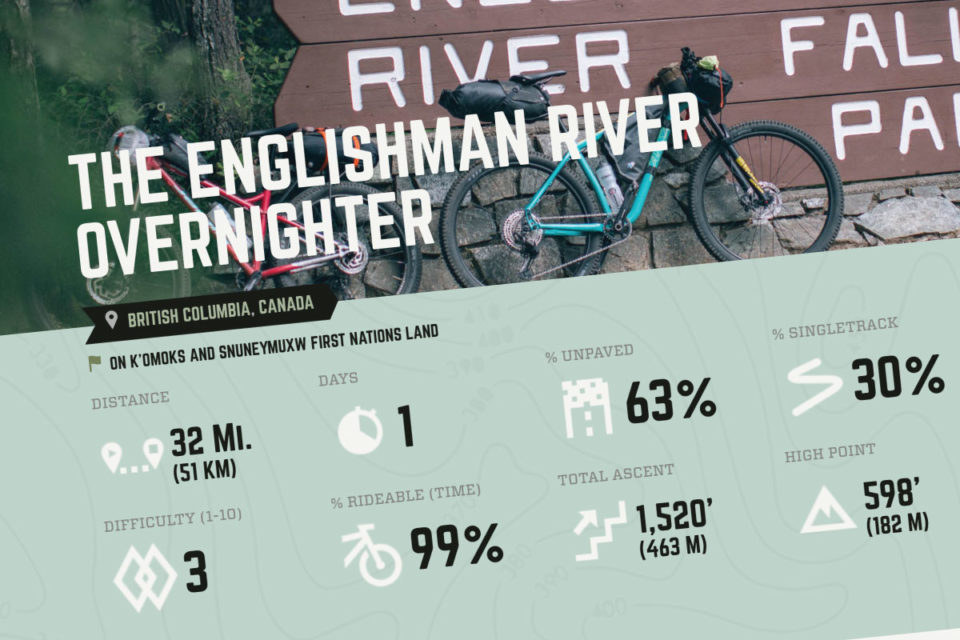We’ve added expanded location tagging and land acknowledgements to all of our North American bikepacking routes, and are working on building it out even more. Learn more details about these updates here…
As many of you may have noticed, we’ve been busy making small tweaks to the site. For one, following the location markers in The Bikepacking Journal, we added location-specific tags to our home page last fall. And we’ve since further developed that functionality for our ever-expanding routes catalog. All of our bikepacking routes and Overnighters in North America now have state and province location tags. You can click each one to find other routes in that particular region. We’ll be extending that to all routes, adding sorting options, and eventually integrating that into stories and video content, too.
We know we’ve made mistakes over the years by not properly representing the land that our bikepacking routes use, and we still have a lot of work to do. But, today we’re announcing a significant improvement. Alongside this expanded location data, all of our North American bikepacking routes and Overnighters (over 160) now contain a Land Acknowledgement tag, which we’ll also be expanding to other content. “A Land Acknowledgement is a formal statement that recognizes and respects Indigenous Peoples as traditional stewards of this land and the enduring relationship that exists between Indigenous Peoples and their traditional territories” (Northwestern University). Learn more about why this addition is important below.
The Importance of Land Acknowledgement
by Justin Darbyshire (Wandering Path Consulting)
When we utilize land for recreation it is important for us to understand that we are either reinforcing or dismantling colonial narratives. The lands upon which we travel were occupied long before the establishment of European colonies. Landscapes that we consider to be untouched wilderness were home to the Indigenous Peoples of this continent since time immemorial – and are still an integral part of their cultural identity.
Each of us must take our own steps towards education, acknowledgement and engagement with decolonization. Through this understanding we can begin to heal the impacts of colonization and work towards meaningful reconciliation between indigenous and settler peoples. This process begins by knowing on whose land it is we live, work and engage in our passionate enjoyment of the outdoors. Further, it is paramount that we act accordingly in our use of the land – treating it with reverence not only in consideration of our environmental impact but also in respect to the people to whom it holds a deeper meaning.
We’ve been hard at work researching and adding Land Acknowledgements for all of our North American routes. Given the sheer complexity of this exercise, we expect that we may have missed some, and possibly misspelled or chose an improper or unused name. If you find such mistakes, please let us know in the comments on this post and we’ll make sure to get them corrected. And if you wish to do your own research on the Indigenous history of a specific area, be sure to dig into the map at native-land.ca.
If you missed it live on Indigenous Peoples’ Day, we recommend watching the Land Acknowledgment and Indigenous Representation discussion between Christina Torres of Cyclista Zine and Diné storyteller and artist Renee Hutchens. The Guide to Indigenous Land Acknowledgment from the Native Governence Center in Minneapolis is another good place to start to learn more about land acknowledgement.
FILED IN (CATEGORIES & TAGS)
Dispatch
Please keep the conversation civil, constructive, and inclusive, or your comment will be removed.































